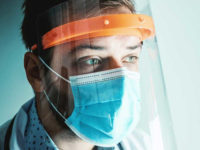With multiple health threats like COVID-19 still looming and flu season ahead, people are concerned about their safety, especially if/when they need to seek serious medical attention. Some individuals are even avoiding going to a hospital, fearful of picking up a serious health care acquired Infection (HAI). HAIs are infections that are picked up in a health care facility, typically while being treated for something else. They complicate an existing condition and can sometimes result in death.
Although the news has been flooded with stories about COVID-19 in recent months, there’s another severe condition that affects too many people: clostridium difficile, or C. diff. According to the Centers for Disease Control and Prevention (CDC), C. diff causes approximately 500,000 illnesses each year in the U.S., affecting people of all ages. One in 11 patients over age 65 die within one month of contracting C. diff.
November is recognized as C. diff Awareness Month and brings much-needed attention to the seriousness of C. diff as well as other deadly HAIs commonly contracted in hospitals and healthcare facilities.
C. diff infection occurs when the bacteria are contracted by touching contaminated surfaces or transmitted when an infected person who hasn’t thoroughly washed their hands touches something or someone. It can also develop from the over-use of prescribed antibiotics. Normal, healthy bacteria of the colon is disrupted, causing inflammation and severe diarrhea. If contracted, C. diff can cause severe harm and could be fatal.
In November of 2019, the CDC developed a goal to reduce C. diff infections by 30%. This included promoting guidelines for disinfection to help control the infection rate and using improved methods of environmental cleaning.
What is Being Done About C. Diff and Other Deadly HAIs in Hospitals?
The health care industry has recognized the necessity and urgency to upgrade age-old cleaning protocols using hands-on manual cleaning and disinfecting. Not only do these cleaning methods put both patients and staff at a higher risk of contracting an infection, they also perpetuate the possibility of human error, transferring deadly pathogens to high-touch areas in a patient room. At the CDC’s direction, infection preventionists have sought new ways to disinfect hospital rooms to ensure that patients, staff, and visitors are safe.
One new technology-based solution is a disinfecting robot, such as the Nimbus, by Nevoa Inc. disinfecting robots use a proprietary fogging system to disinfect the whole patient room at once. When used in conjunction with a hospital-grade disinfectant, this technology not only kills C. diff, but also other deadly pathogens that cause infections such as staph, pneumonia, MRSA, Influenza A, and COVID-19.
In an unoccupied, closed patient room, a disinfecting robot atomizes, or fogs, a disinfectant solution, coating all surfaces, including the back sides of equipment and under the bed. Nevoa’s Nimbus, for example, then uses a patented dehumidification process to remove the solution from the air and surfaces. This 30-minute disinfection process allows for immediate room re-entry which, in turn, allows hospitals to quickly admit new patients into a room.
A study by the University of Arizona proved that a modified manual cleaning process combined with disinfection is exceptionally effective at killing pathogens.
With cutting-edge disinfection technologies, such as Nimbus, designed with patient safety in mind, hospitals and health care facilities across the country now have the capability to eliminate deadly pathogens causing HAIs and make it safer for people to get the treatment they need.





